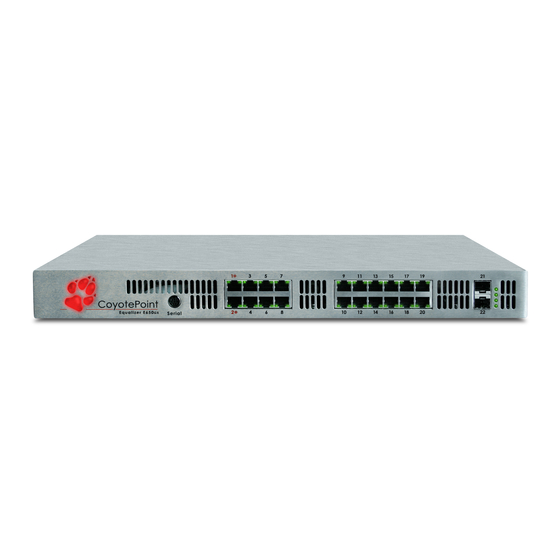
Coyote Point Systems E350GX Equalizer Manuals
Manuals and User Guides for Coyote Point Systems E350GX Equalizer. We have 1 Coyote Point Systems E350GX Equalizer manual available for free PDF download: Installation And Administration Manual
Coyote Point Systems E350GX Installation And Administration Manual (344 pages)
Brand: Coyote Point Systems
|
Category: Stereo Equalizer
|
Size: 4.66 MB
Table of Contents
-
-
-
-
VLAN Basics
64 -
-
-
-
-
LB Policy Tab125
-
-
-
Using ACV134
-
Enabling ACV135
-
-
Managing Servers
140-
The Server Table140
-
-
-
-
-
MIB Description206
-
Why Match Rules
210 -
-
Match Bodies214
-
Match Functions
221 -
Equalizer VLB
297 -
-
Using VLB Basic298
-
-
VLB Logging
308 -
VLB Plotting
309 -
Troubleshooting
311 -
Appendix G
312 -
-
Battery322
-
Specifications322
-
Glossary
325 -
Index
335
Advertisement
Advertisement
